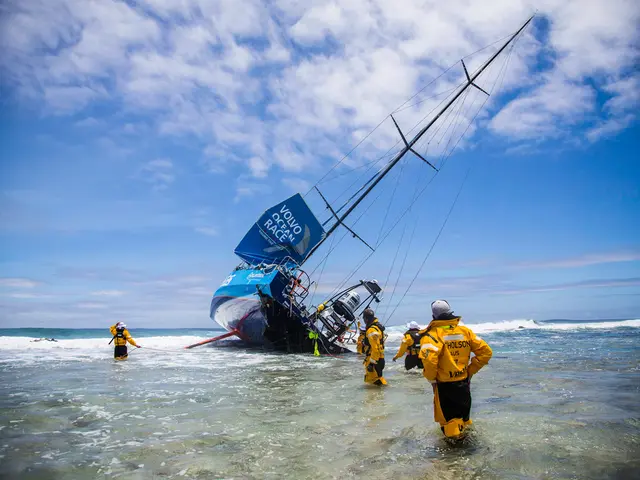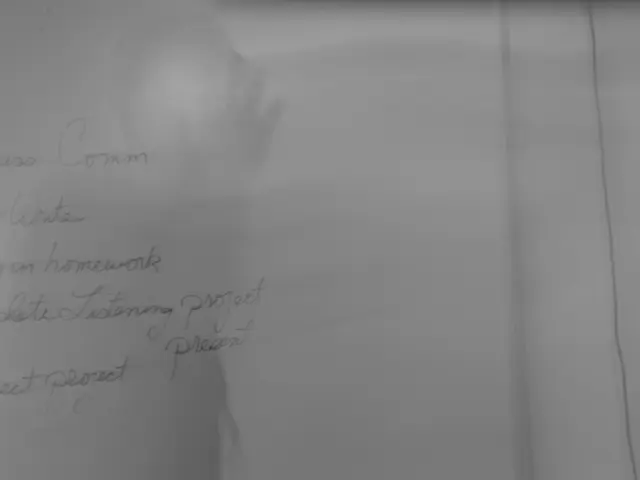Feisty Standoff Over the Baltic Sea: German Eurofighters Engage Russian Reconnaissance Aircraft
- ⏱️ 1 Min Read
EU Intelligence Initiates Swift Eurofighter Intervention - Alarm activated by Russian reconnaissance aircraft discovered by Eurofighters
In a tense exchange, two Eurofighters from the German military took flight, called into action by a Russian reconnaissance aircraft hovering over the Baltic Sea. The rogue aircraft, an Iljushin IL-20, was spotted traversing international skyways without a transponder signal or radio contact, according to a spokesperson.
A Tense Dance in the Baltic Region
In the heat of the moment, NATO put the quick-response alert of their air force into action at the Rostock-Laage Air Base. With the two-week maritime exercise Baltops ongoing in the Baltic Sea—involving 17 ships to practice anti-submarine warfare, the use of unmanned systems, mine sweeping, explosive ordnance disposal, and maritime air defense—it was a powder keg waiting to ignite.
This marked the sixth scramble of the air force this year, reflecting the escalating tensions in the Baltic region, following espionage attempts and suspected acts of sabotage.
The Great Game of Chess Over the Baltic
Recent months have seen a noticeable increase in Russian reconnaissance and surveillance flights in the region, leading to repeated conflicts and NATO fighter jet interceptions. These situations underscore the growing military tension and strategic maneuvering at play.
Recent Encounters
In April 2025, RAF Typhoons launched three times to intercept Russian aircraft approaching NATO airspace near Poland. The aircraft troublesome included specialized surveillance and reconnaissance planes such as the Il-20M and An-30.
In May 2025, NATO jets stationed in the Baltic states scrambled four times to identify and escort Russian aircraft that violated flight rules.
In early June 2025, NATO fighter jets scrambled three times to detect and escort six Russian military aircraft over the Baltics, all of which violated flight rules.
These exchanges highlight the ongoing chess game between Russian reconnaissance and NATO's collective defense posture over the Baltic Sea.
Russia's Strategic Intentions and NATO's Response
Russian reconnaissance missions aim to collect intelligence on NATO military activities, including radar layouts, command structures, and air defense positions. They also help Russia assess NATO's response times, coordination, and force posture, providing valuable data for future planning. Furthermore, these operations function as political signals, demonstrating Russian military presence and challenging NATO's influence in the area.
NATO maintains a robust air policing mission in the Baltic states, regularly scrambling jets to identify, escort, and deter Russian aircraft violating international rules. NATO aircraft monitor Russian flights, ensuring compliance with international regulations, and deterring potential escalation.
A Historical Perspective
The Baltic region has a long history of Russian-NATO aerial encounters. Since at least the early 2010s, Russian military aircraft have regularly conducted flights near NATO airspace, often resulting in NATO scrambles. The use of Kaliningrad as a forward-operating base, equipped with advanced weaponry like the S-400 and Iskander-M, increases Russia's ability to project power and conduct persistent surveillance in the region.
Recent years have seen an increase in the frequency and complexity of these incidents, reflecting broader geopolitical tensions and a perceived long-term confrontation between Russia and NATO.
- In light of the escalating tensions in the Baltic region, the community policy of NATO needs to address the frequent Russian reconnaissance flights that violate international rules, ensuring a strong and unified employment policy for their airforce.
- The employments policies of both NATO and Russia, particularly in the aerospace industry and finance, play significant roles in influencing their capabilities and strategies during these standoffs over the Baltic Sea.








